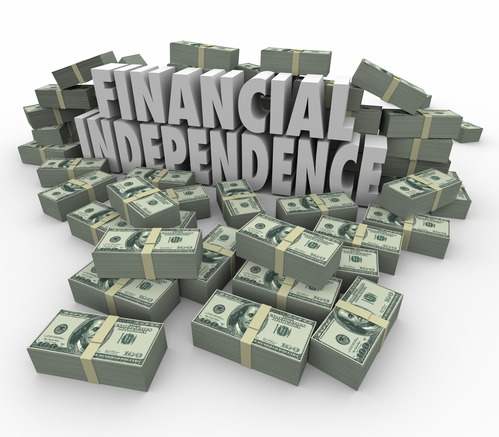By Mark Seed, MyOwnAdvisor
Special to the Financial Independence Hub
Passionate readers of this site have long understood I’ve never been fully convinced about the “retire early” element in the Financial Independence Retire Early (FIRE) movement.
I mean really, what 30- or 40-something is never going to work for any money ever again??
(Answer = you know it.)
Surely some of them will hustle a blog, a course, a book, a podcast or other at some point. The list goes on.
Such FIRE-seekers and very early retirees are not likely misleading people on purpose: some are just simply entrepreneurs …
Forget “RE”, “FI” is the worthy goal
While I couldn’t care less about the retire early part of FIRE, I am working towards the FI part and have been doing so for at least a decade now.
I think most people should absolutely strive for FI instead of early retirement. (See this 2019 blog, Strive for Financial Independence, not Early Retirement).
How much do you need to save for any comfortable retirement?
“It depends.”
According to Fidelity, to be on track for a healthy retirement:
- You should have x1 your annual salary saved up for retirement by age 30.
- You should have x3 your annual salary saved up for retirement by age 40.
- You should have x6 your annual salary saved up for retirement by age 50.
- You should have x8 your annual salary saved up for retirement by age 60.
- You should have x10 your annual salary saved up for retirement by age 67.
As a 40-something, according to the pros we should have at least x3-x6 of our annual savings in the bank.
I’m glad I don’t listen to Fidelity. We’re beyond that milestone and we’ll be better off financially (sooner) because of it.
Here in Canada, MoneySense did some similar work on this a while back:
Do you really need this much? $1 million or $1.5 million? More?
“It depends.”
I can’t tell you unfortunately: since that answer comes with a complex set of income needs and wants and everyone’s spending goals are very, very different.
I can say with a rather firm set of certainty that if any Canadian or U.S. citizen that amasses this much portfolio value by age 65 and has modest spending needs they will be far better off financially than most.
Our FI number
For years, I’ve pegged our FI number to be around the $1 million portfolio value mark not including any home equity (and our soon-to-be debt-free home: we have to live somewhere!), excluding our workplace pensions, and excluding any future government pensions such as Canada Pension Plan or Old Age Security.
I largely arrived at this number by using a rather standard FI formula.
Financial Independence means:
- earning enough passive income from my assets such that my asset-producing passive income is > general expenses, and/or
- amassing a portfolio value such that reasonable withdrawals will be > general expenses for many decades on end.
What are reasonable withdrawals???
You could argue the birth of any reasonable and therefore any safe portfolio withdrawal formula was originated by U.S. financial advisor William Bengen.
You can read about his genesis for the 4% rule and why it still makes sense by reading this blog from earlier this year: Why the 4% Rule is (still) a decent rule of thumb.
Following Bengen and largely reinforcing his work, three professors at Trinity University published a paper about safe retirement withdrawal rates.
Those professors looked at stock and bond data from the mid-1920s through to the mid-1970s and their conclusion was that essentially over any 30-year investment period in that range, a retiree could safely withdraw 4% of their total assets per year without much fear (meaning barely any fear) of running out of money. Only in a handful of cases, the very worst cases in any 30-year period, would the portfolio go to absolute zero.
So, let’s look at that context when it comes to our goals:
If we managed to enter retirement with our desired $1 million goal of invested assets (along with no debt of course), then we could reasonably expect to assume we could withdraw $40,000 per year for our living expenses from that portfolio with very little fear of running out of money.
Henceforth, the study by those three professors from Trinity University, The Trinity Study, have set the framework for a gazillion FI number crunching exercises to this day and likely the same number into the future …
Determining your FI number
Here are some options to crunch your math. Continue Reading…








